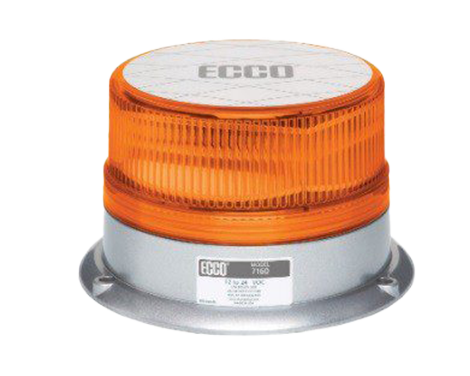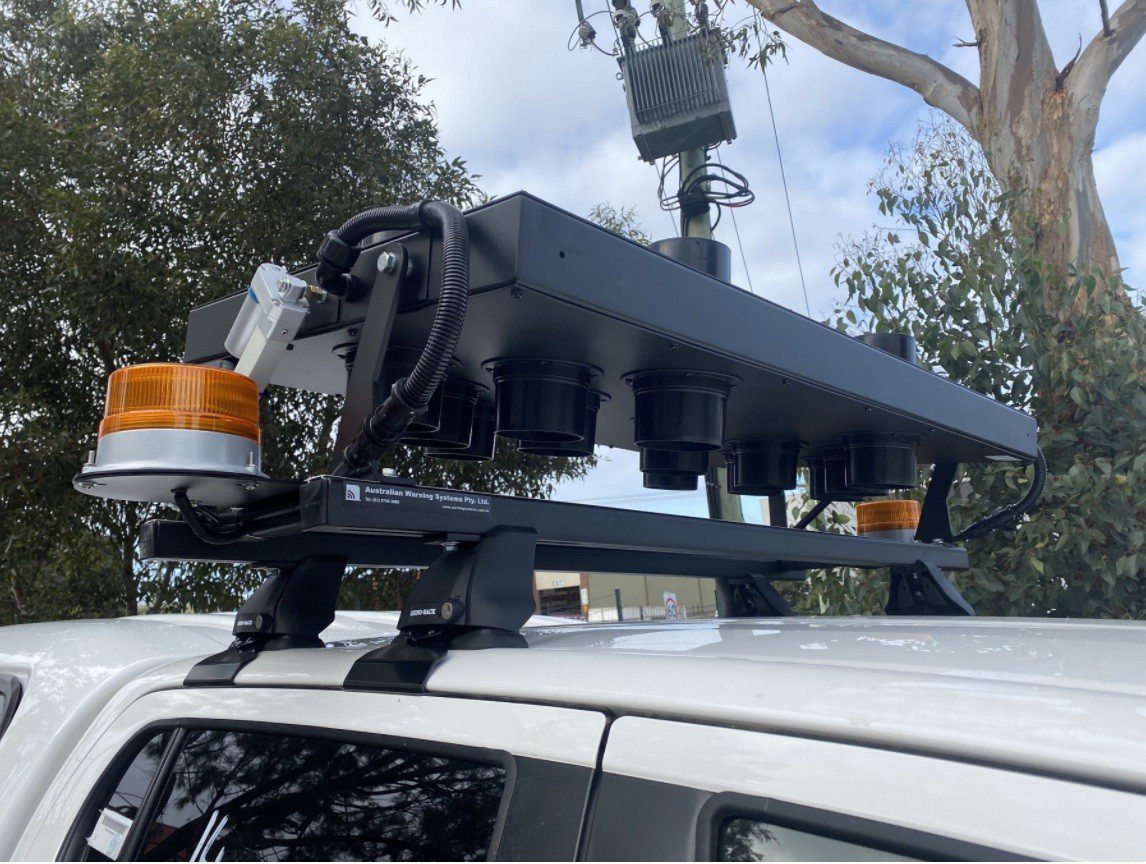Guide to flashing beacon lights on vehicles
Flashing beacon lights are a critical component of many warning systems. From construction works to traffic control, the instant visibility made possible by these intense lights helps to alert and guide members of the public in high-stakes environments.
As beacons are reserved for certain vehicles in specific scenarios, it’s important to understand how and when your fleet can use them. These strict regulations ensure the lights are used properly and maintain their impact.
Here, we dive into the varied applications of flashing beacons, why they’re important and how to choose the right one for your task. Keep reading to discover how these standout signals can bolster safety and communication when needed most.
This is a general guide only and is not intended as legal advice. If required, please consult a legal professional for personalised guidance before buying and using a flashing beacon light.
What is a flashing beacon?
![]()
Flashing beacon lights are round warning lamps with a micro, low, medium or high-profile height. Almost all beacons will feature a rotating flashing light, with a wide variety of patterns to choose from.
Beacons are installed on various vehicles or equipment, such as forklifts, ambulances and police cars, to alert people in the vicinity of their presence.
The importance of flashing beacons
Flashing beacon lights are essential in safety and warning systems, offering bright alerts that play a crucial role in preventing accidents and ensuring safety. Their standout illumination draws attention wherever they’re used.
On roadways, these signals increase the visibility of vehicles, facilitating faster alerts and rapid action in urgent situations. They’re widely used on pilot, traffic management, civil construction and some emergency response vehicles.
In industrial and construction areas, beacon lights on heavy machinery warn workers about active equipment. They’re also used to highlight hazardous zones or signal the movement of vehicles, improving safety and reducing the likelihood of accidents on worksites.
Where to mount a beacon light
Generally speaking, flashing beacon lights should be installed on the top of a vehicle or equipment. While the exact requirements vary across Australia, usually this warning lamp must be visible from a minimum distance of 200 metres in all directions.
Another key consideration when installing your beacon is the driver of the vehicle or equipment that it is attached to. To prevent distraction, the flashing beacon’s lens should not be visible to this driver – not even in the rearview mirror.
Find more information on beacon requirements for vehicles in your state or territory below:
- NSW: Road Transport (Vehicle Registration) Regulations 2017
- QLD: Transport Operations (Road Use Management – Vehicle Standards and Safety) Regulation 2010
- VIC: Road Safety (Vehicles) Regulations 2009
- WA: Road Traffic (Vehicles) Regulations 2014
- SA: Road Traffic (Light Vehicle Standards) Rules 2018
- The ACT: Road Transport (Vehicle Registration) Regulation 2000
- TAS: Vehicle and Traffic (Vehicle Standards) Regulations 2014
- NT: Motor Vehicles (Standards) Regulations 2003
Flashing beacon colours explained
![]()
The colour of beacon lights varies according to their function and the type of emergency signal they are designed to communicate. Available in amber, blue, red, green and magenta, these lights can also be set to different flashing patterns for improved visibility.
Read on to learn more about each beacon colour.
Amber
An amber flashing light is typically used to alert road users to an immediate or imminent disruption in traffic flow. It can be installed on stationary equipment or a vehicle that operates in high-risk settings.
The beacon should only be activated when the vehicle is in a dangerous position or moving under hazardous conditions. The light should be turned off when the vehicle is in a safe situation.
Examples of vehicles that may use amber lights include:
- Traffic control equipment
- Utility service vehicles like garbage trucks
- Roadside assistance services
- Tow trucks
- Construction vehicles
- Mobile cranes
- Pilot or escort vehicles for oversized loads
- School buses
- Volunteer service vehicles
- Private security vehicles
- Council rangers
- Street vendor trucks
- Delivery vehicles
Importantly, having an amber flashing light doesn’t grant the vehicle any special right of way in traffic.
Blue
Blue, or blue and red flashing lights on a vehicle, tell other drivers that it’s responding to an emergency.
A blue flashing light on its own is used to identify an accident site or emergency location, respond to an emergency, flag a closed vehicle formation or escort another vehicle.
When accompanied by a siren, blue flashing lights mark critical situations like performing life-saving rescues, preventing major health risks, upholding public safety, chasing suspects, or protecting property. In these cases, all other road users must make way for the vehicle immediately.
Therefore, only emergency services can use blue lights. Permitted vehicles include:
- Police cars
- Ambulances
- Firefighting vehicles
- State Emergency Services (SES) vehicles
- Vehicles driven by traffic emergency patrollers or commanders
Red
A red flashing beacon signals to road users that a vehicle is engaged in a critical life-saving operation. Therefore, this colour should only be used when immediate action is required in response to fires, accidents and other emergencies.
Red beacons are reserved for vehicles used by non-government emergency and some rescue services, including:
- Mine rescue vehicles
- Medical escort vehicles
- Red Cross vehicles
- Other emergency vehicles driven by emergency workers to perform their duties
Magenta
Magenta beacons are mainly used for escorting heavy vehicles and enforcement purposes. In Australia, this colour is reserved for state government departments.
Green
You won’t come across green beacon lights very often. This colour is used to mark a command post for police cars, fire trucks or ambulances, and may only be switched on while the vehicle is stationary.
Benefits of choosing an LED beacon

Before Light Emitting Diodes (LEDs), beacons depended on incandescent or halogen lights. Today, the shift to LED technology has marked a substantial upgrade in safety and efficiency. Here are the core benefits of LED flashing beacon lights.
Unrivalled visibility
Thanks to their superior size and brightness, LEDs provide a more visible alert, particularly over greater distances. This is vital for sharing urgent alerts in emergency scenarios.
Prolonged lifespan
LED lights boast a longer lifespan compared to conventional bulbs – we’re talking tens of thousands of hours. For your fleet, that means fewer replacements and less frequent maintenance.
Energy efficiency
LEDs are far more energy-efficient, which makes them both cost-effective and friendlier to the planet. This eco-friendly option also doesn’t contain any mercury or other toxic materials.
Instant light
In contrast to traditional bulbs that need a few seconds to heat up and achieve full brightness, LEDs illuminate instantly to create an immediate warning.
Robust design
LEDs don’t break easily. Suitable for harsh and outdoor conditions, these beacons can withstand shocks and vibrations to a greater degree than their older counterparts.
How to select the most suitable beacon light
Ready to browse beacon lights for your emergency signal or warning system? Keep these factors in mind to make sure you choose the right solution:
- Brightness: Select a beacon light that provides appropriate visibility for the application. High-intensity lights are advised for busy or outdoor areas.
- Colour: Choose the correct hue for your intended use as per industry standards and legislation.
- Patterns: LED beacons can emit light in different modes:
- Rotating lights are best for alerting in all directions
- Flashing or strobe lights are ideal for immediate warnings
- Steady lights are best for continuous warnings in places like construction sites
- Durability: If relevant, pick a beacon that is hard-wearing enough to endure environmental conditions, like extreme weather or heavy-duty industrial applications.
- Installation suitability: Look for a light that can be easily mounted on your specific vehicle or equipment, and that offers flexible fitting options for different applications.
Browse a full range of flashing beacons
Thanks to their high visibility and durability, flashing beacons provide clear alerts for superior safety in many situations. Whether you need a single-colour or dual-colour lighting solution, Australian Warning Systems has you covered.
Explore beacon lights for early warning and emergency signalling systems today. Available for Australia wide delivery, our comprehensive range caters to the distinct needs of different industries and environments.
For more information, get a quote online, give our team a call at 03 9796 5880 or email us at info@warningsystems.com.au.



